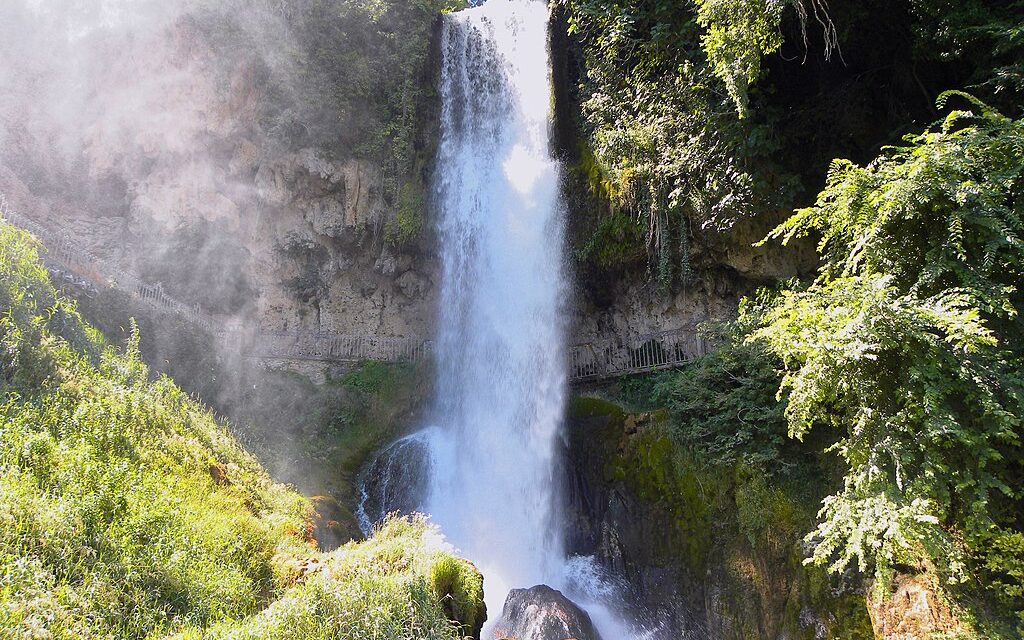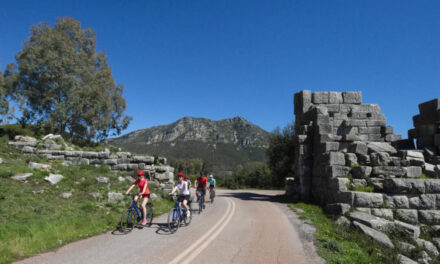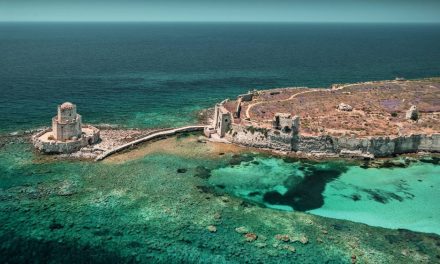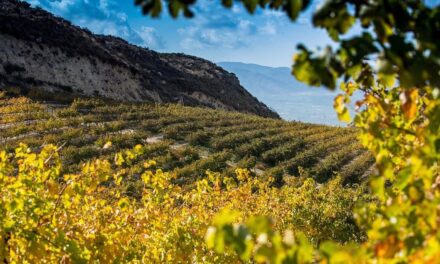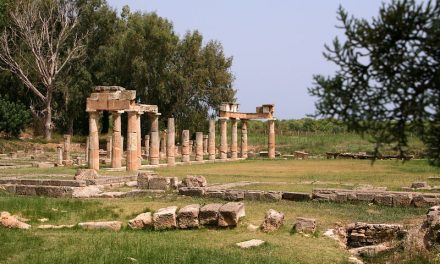Although most people abroad would associate Greek landscapes with small islands, sunny beaches and a blue sea, there is another aspect to its natural beauty: over 70% of its total area is made up of mountains and hills. And in these terrains, impressive or quaint waterfalls are often formed – including on many of the famed Greek islands. Here is a list of but a few among Greece’s dozens of mesmerizing waterfalls.
Northern Greece
Edessa Waterfalls
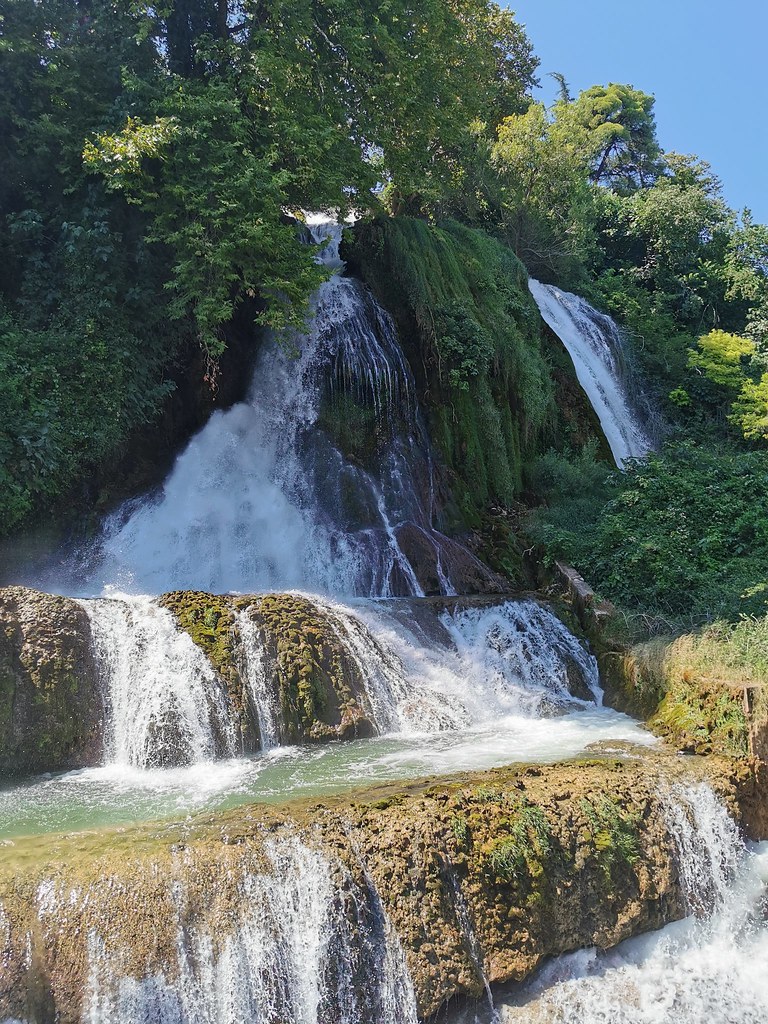
The town of Edessa, in the region of Macedonia, boasts the country’s most famous waterfalls. They were formed following a strong earthquake that struck the surrounding area in the 14th century. The main source of these waterfalls is the wetland of Agra-Nissiou, from which flows the main river, Edessaios. Altough there are twelve of them in total, only four can be observed by visitors. The most impressive ones are Karanos, also known as the Great Waterfall (see intro image), falling from a aheight of around 70 meters, and the Diplos (“Twin”) Waterfall.
Skepasmeno Waterfalls
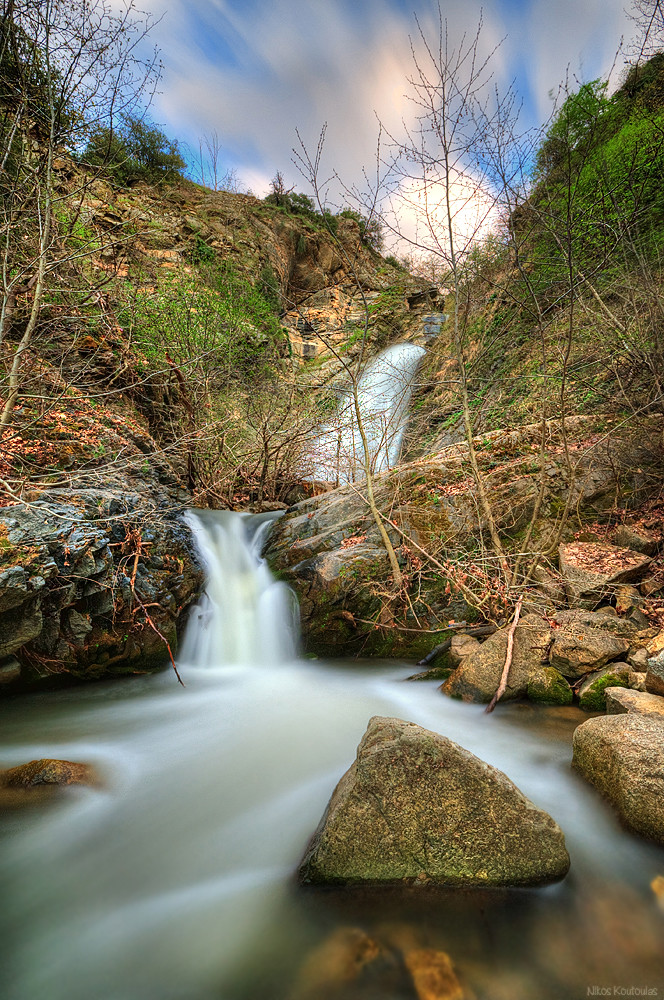
Skepasmeno Waterfalls, a series of waterfalls located near Velventos, in the Kozani region of Western Macedonia, Greece. The name “Skepasmeno” (meaning “covered” or “sheltered”) is derived from a point where the stream is naturally covered by vegetation and rocks. It is a site of striking natural beauty, with its waterfalls, natural ponds, sycamore trees, cold-water springs, lush vegetation and impressive rock formations.
Livaditis Waterfalls
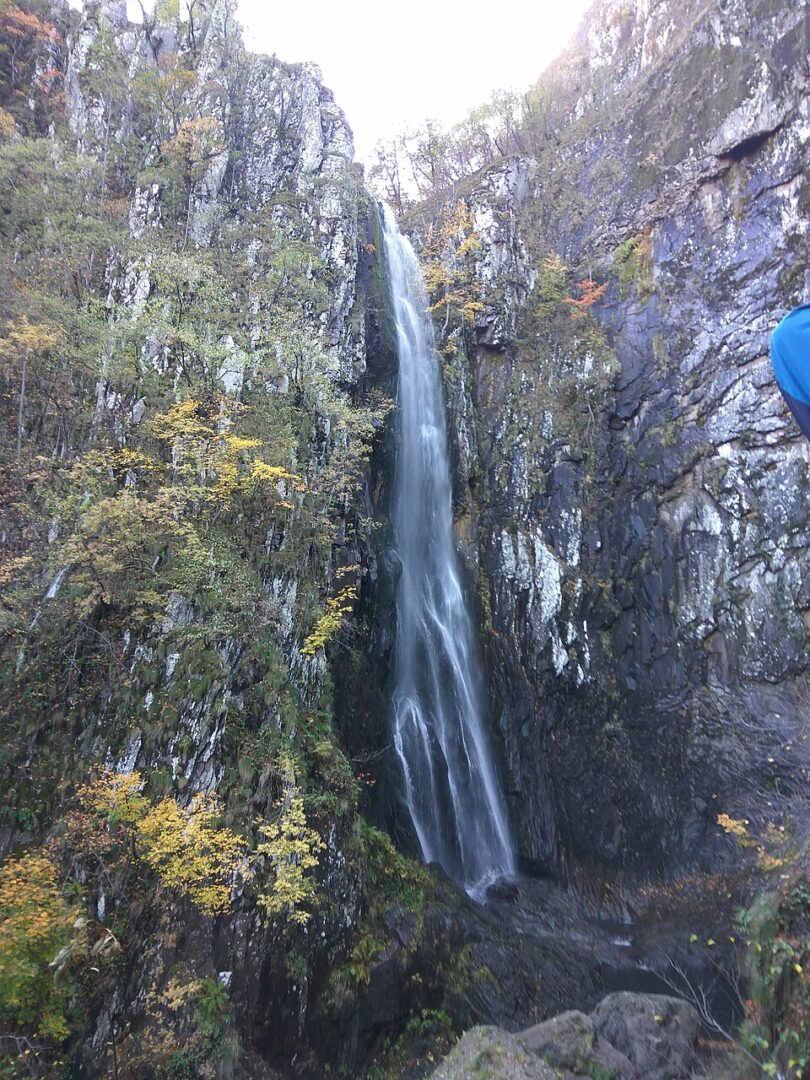
The Livaditis (or Trachoni) Waterfall is located near the village of the same name. Livaditis is the highest village within the Xanthi regional unit in Eastern Macedonia and Thrace, situated at an elevation of 1,200 meters. The waterfall stands over 50 meters tall and is regarded as one of the largest ones in the Balkans by water flow.
Lepida Waterfall (Rodopi)

Lepida is a forest near the village of Paranesti in Rodopi, northern Greece, featuring beautiful waterfalls – a popular hiking destination known for its beauty and serene natural environment. The forest, part of the broader Rhodope Mountains, is characterized by its lush vegetation and is a good starting point for exploring the area’s hiking trails, including those leading to the waterfall.
Souda Waterfalls
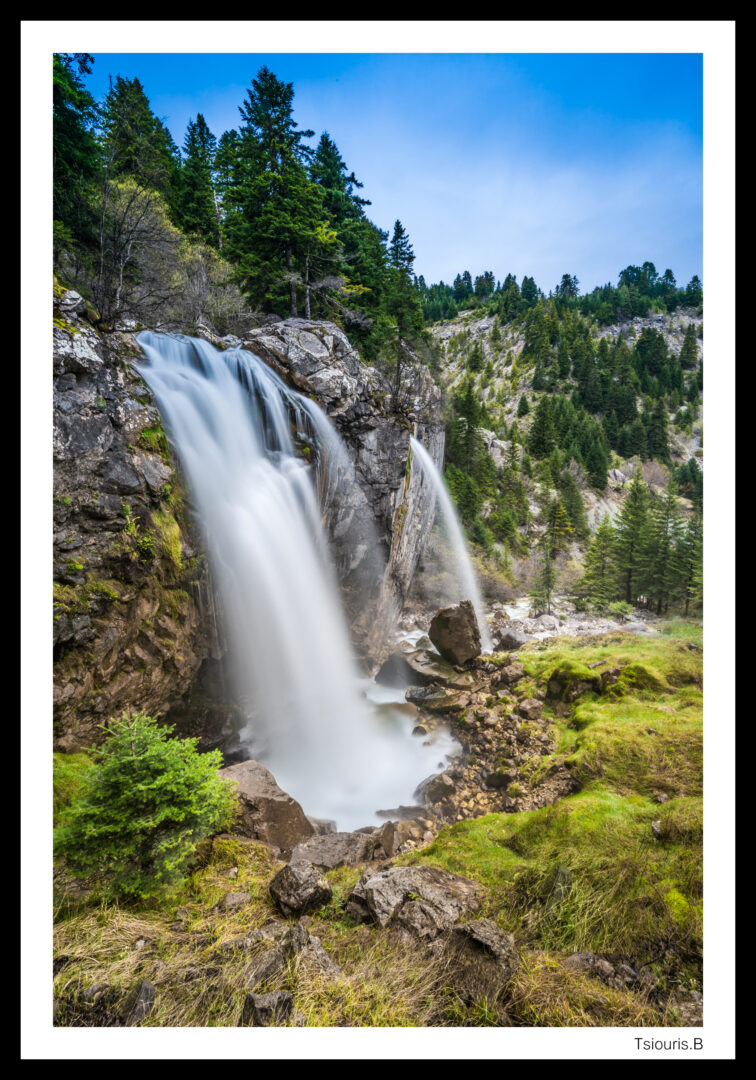
Souda Waterfalls, also known as Theodoriana waterfalls, are twin falls located near the village of Theodoriana, within the National Park of Tzoumerka, Peristeri, Arachthos Gorge & Acheloos Valley, in the region of Epirus. They are surrounded by a fir forest, making for a breathtaking scenery, and are easily accessible by car.
Boulouvaros Waterfalls
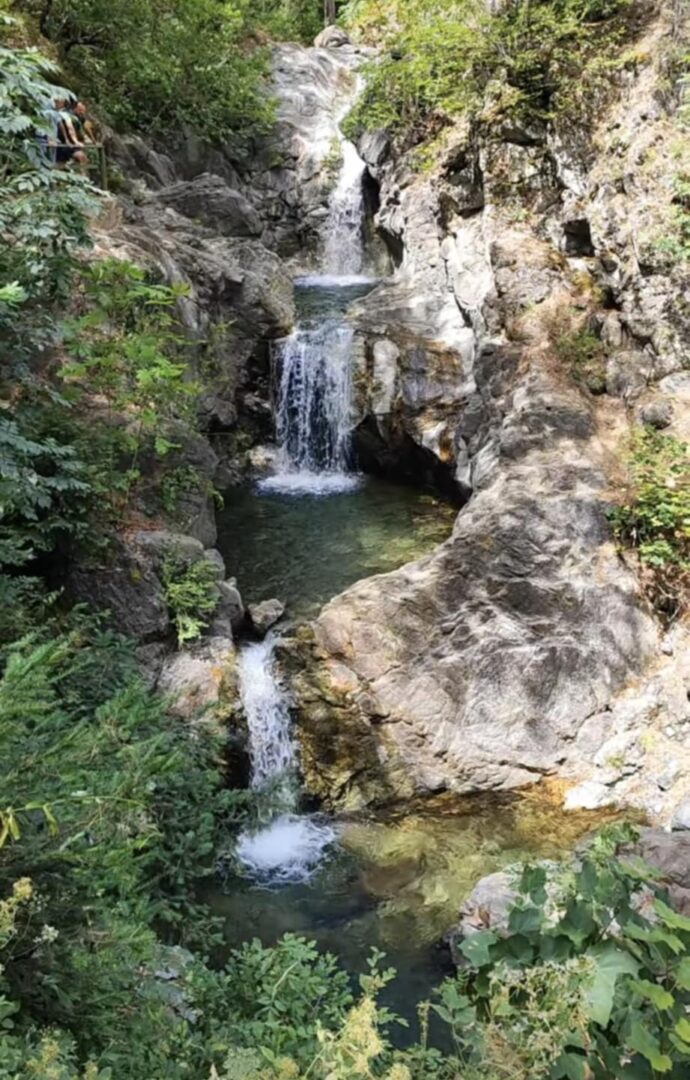
Near the traditional village of Milia, in the region of Epirus, you can find the verdant Gorge of Boulouvaros, created by the flaw of the eponymous river. The triple waterfalls created by the river make for an extremely picturesque scenery, and can be approached through a trail, so visitors can also enjoy a swim.
Bridge of Gretsi
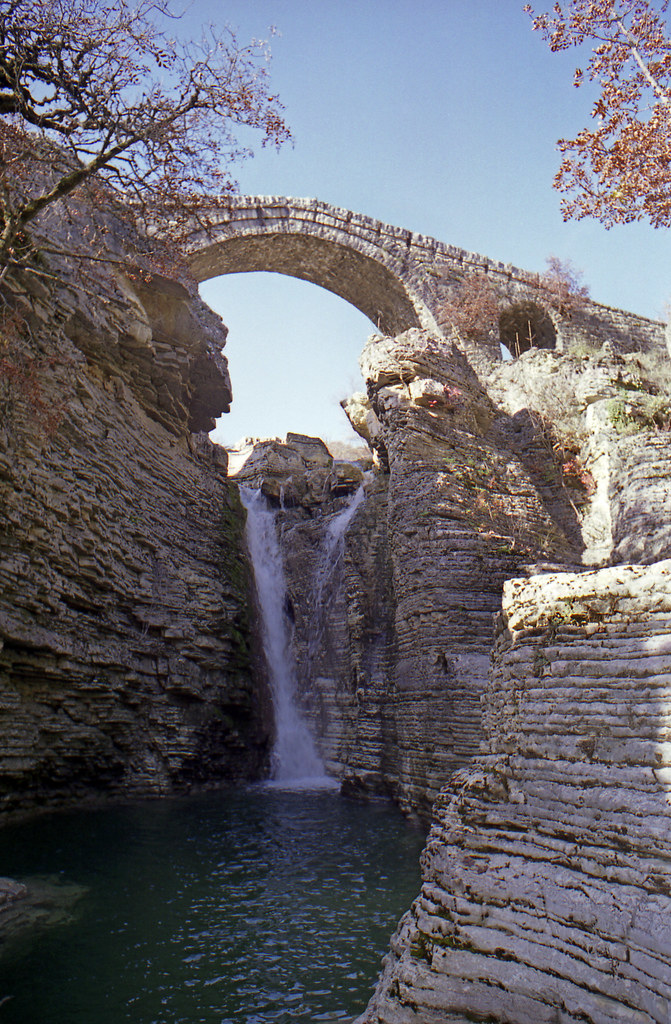
A few kilometres south of the village of Kato Meropi in Epirus lays this single-arched bridge which spans a small ravine and sits above a small waterfall. It was built in 1830 to connect the two sides of Gormos river.
Orlias Gorge
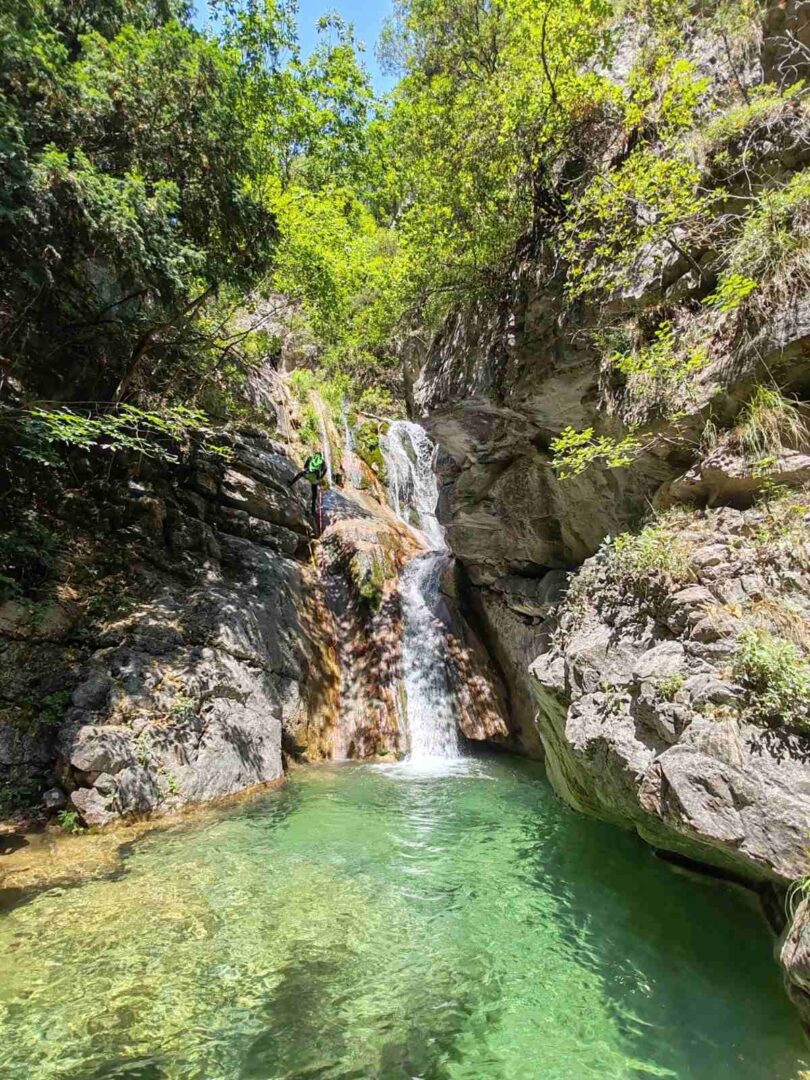
Orlias or Orlia Gorge, located on the eastern slopes of Mount Olympus in Greece, is a popular destination for canyoning and river trekking. It’s known for its stunning natural beauty, with crystal-clear waters flowing through the gorge, creating waterfalls and natural pools ideal for swimming and diving. The area is also rich in flora and fauna, with many endemic plants and rare bird and mammal species.
Central Greece
Pantavrechi Gorge
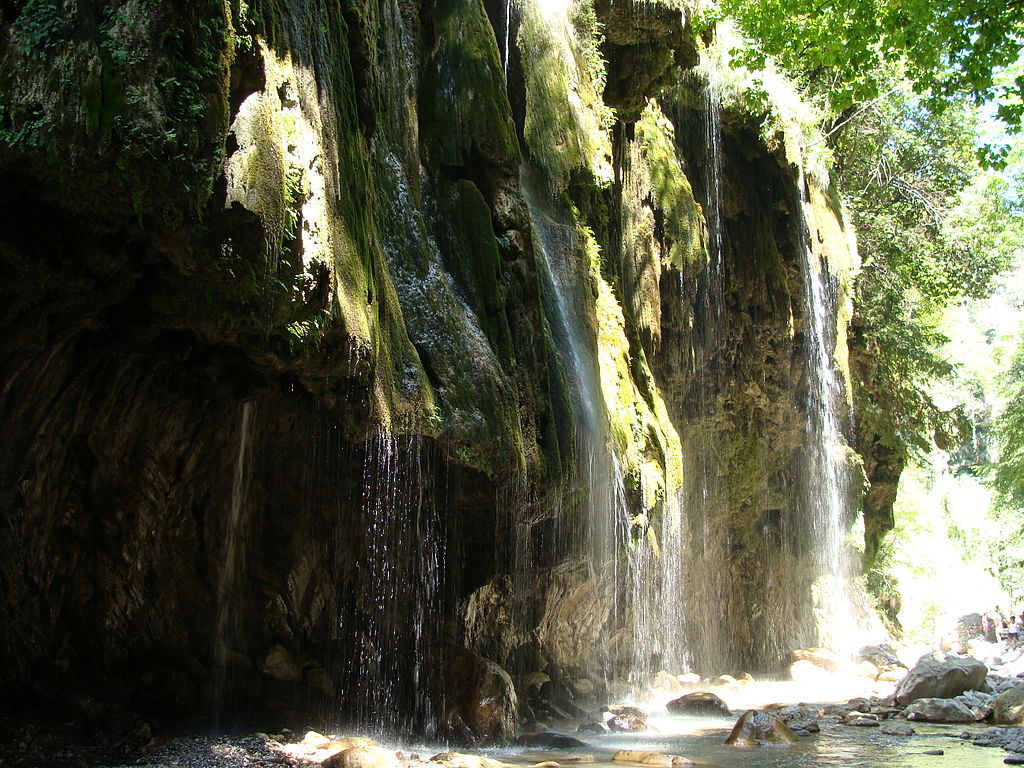
The name of this gorge (also transliterated as Panta Vrehei, Panda Vrechei etc) means “it’s always raining”. It’s located in the Panaitoliko mount and merges with the river Krikellopotamos. Τhe icy waters coming from Mount Kaliakouda, fall from the top of the cliffs, creating waterfalls of sorts, underneath which you can hike, since the water feels more like heavy rain than an actual waterfall. Small natural pools are formed at the base of the waterfalls where you can swim if can withstand the low temperatures. It’s considered an ideal trekking destination but can only be accessed for four months, between June and September.
Waterfalls of Pavliani
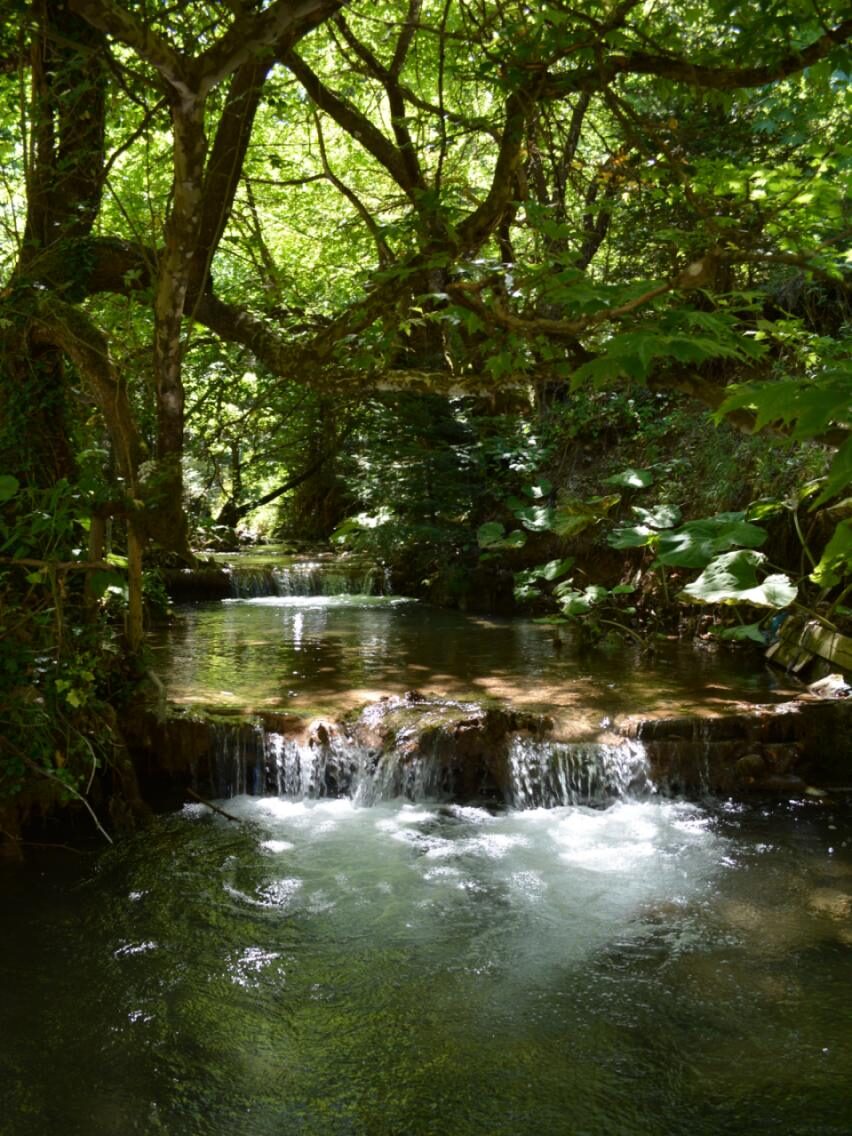
Pavliani is a picturesque village built on the slopes of mountain Oeta, known for its beautiful natural scenery and lush vegetation, especially in the Pavliani Recreation Park, which features trails that follow the Asopos river, crossing it via wooden bridges. A short hike from the park takes you to the serene waterfalls created by the river, another landmark of the site.
Drymonas Waterfalls
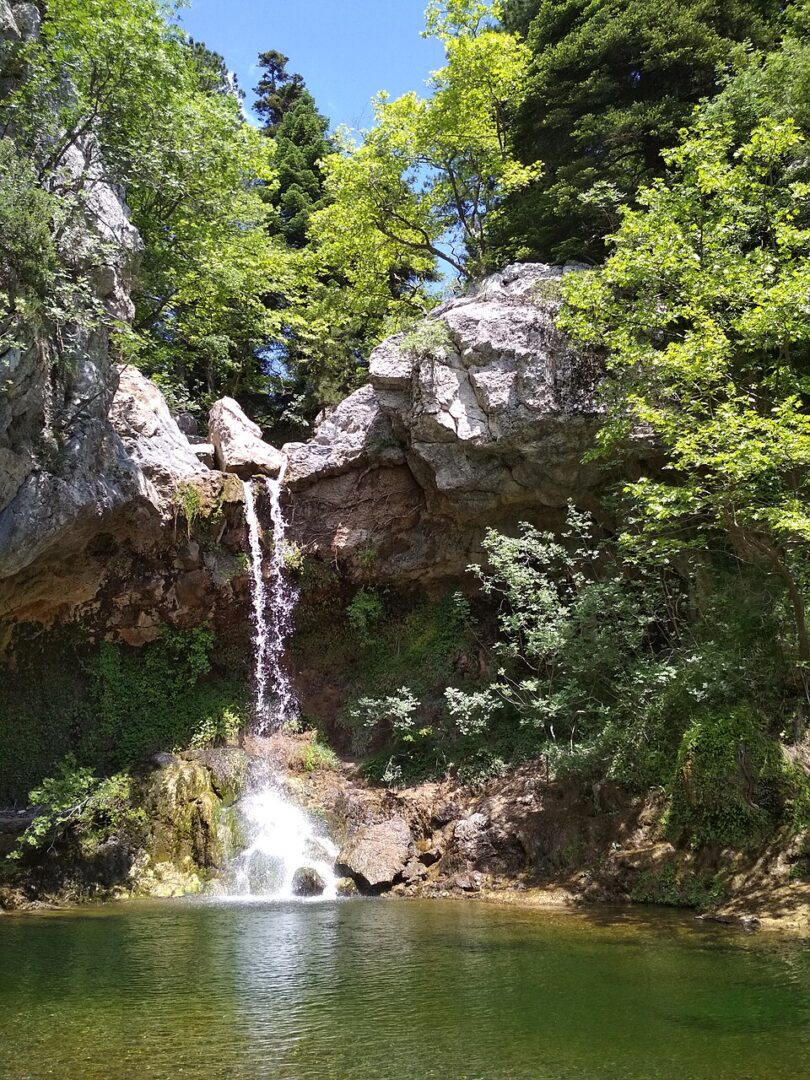
Although Evia (or Euboea) is an island (the second largest one in Greece), it proximity to the mainland of Attica and easy access by a bridge makes people consider rather as an extension of the mainland. Evia boasts magnificent natural beauty, featuring lush vegetation and beautiful beaches, especially in its northern part – where you can also find the Waterfalls of Drymonas (or Drimona), located in a dense fir forest.
Dimosari Gorge (Evia)
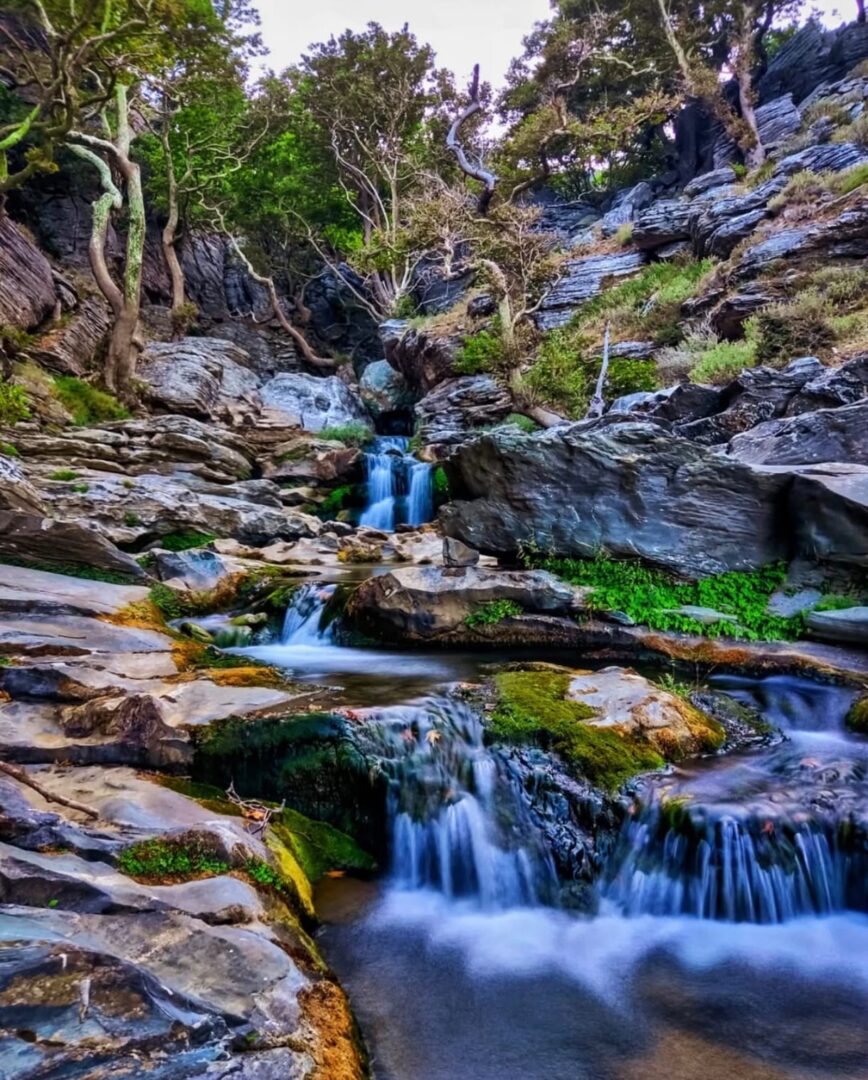
The southern part of Evia, however, does not lack in natural beauty: Dimosari Gorge, located on Ochi Mountains, offers a wonderful hiking trail leading to the sea in Kallianou beach, through a forest of chestnut, plane, wild olive and fruit trees, oaks and colorful flowers. Its most attractive part of the gorge is somewhere in the middle, close to the village of Lenosaioi, where a series of waterfalls offer a majestic view.
Peloponnese
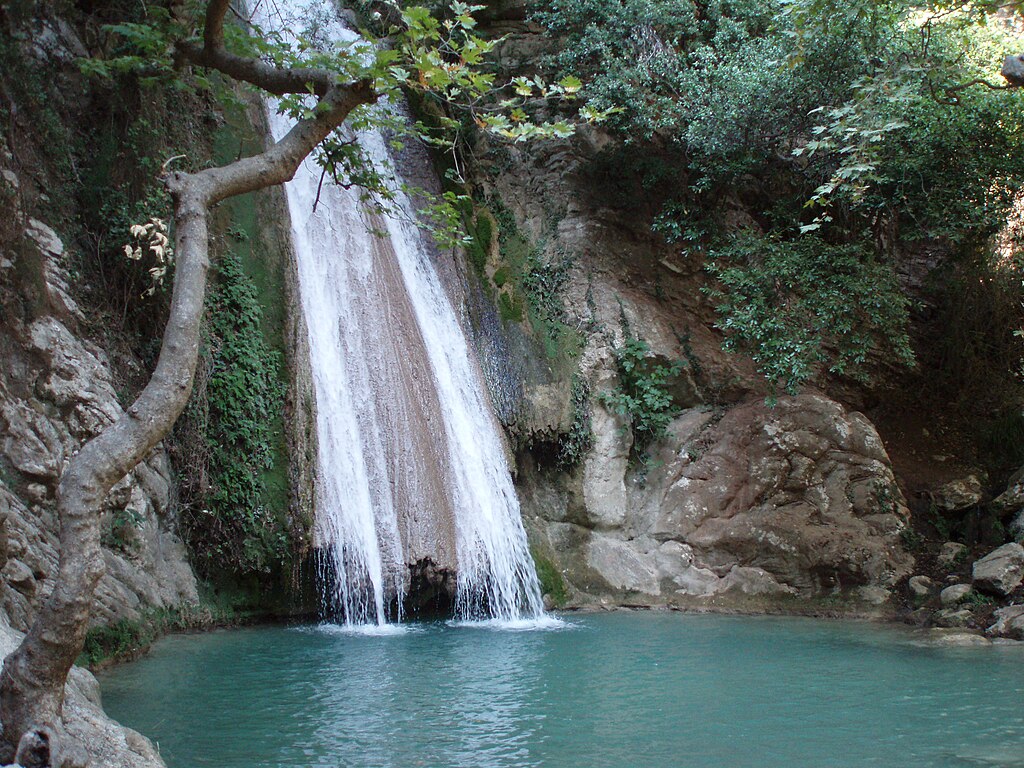
The river of Neda in the Peloponnese crosses a canyon with lush vegetation, where you can find the beautiful waterfalls created by its waters, falling from a height of 60 meters. The area is full of evergreen trees, like holm-oaks, wild fig trees, and willows, while the flora also includes laurels and honeysuckles. The canyon is an ideal destination for hiking and trekking.
Nemouta Waterfalls
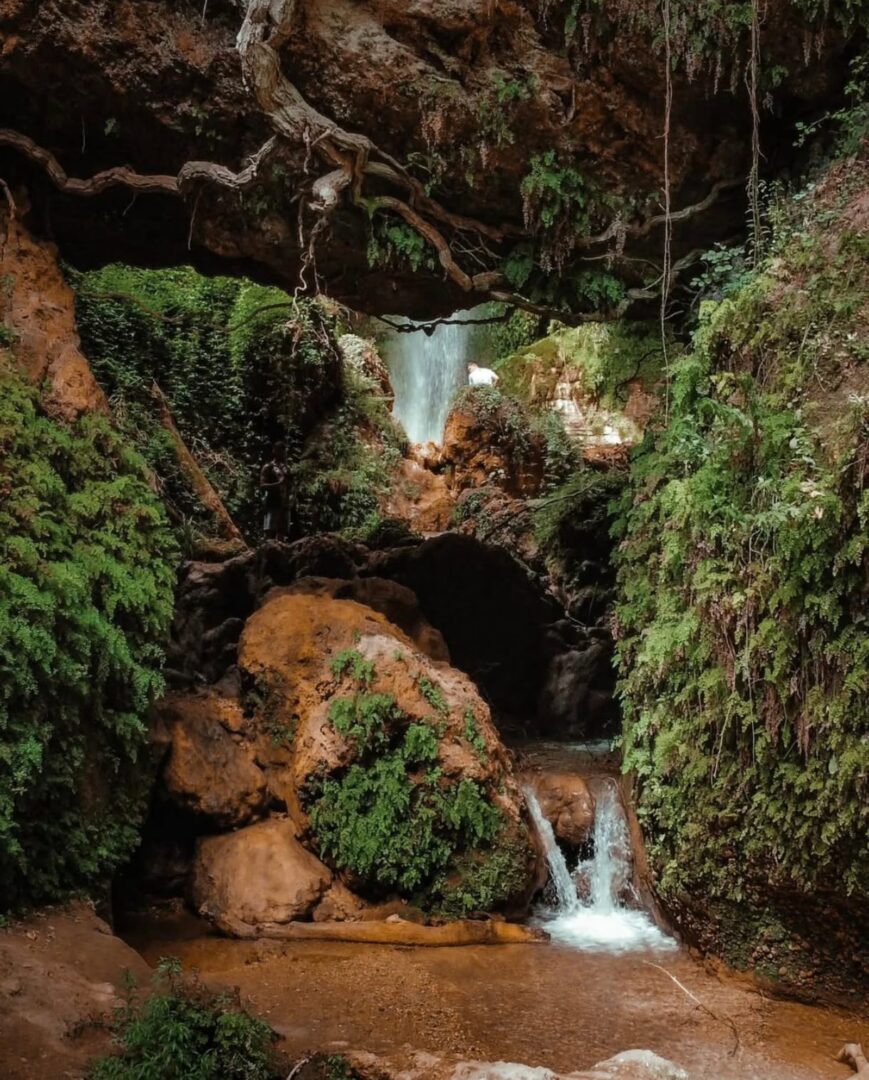
Nemouta Waterfalls are a hidden gem in the mountainous region of Elis, in the northern part of the Peloponnese. They are located relatively close to Ancient Olympia, but remain rather obscure because most are quite hard to access. One of them, the “Gate of Heaven”, is easily accessible by car; experienced trekkers, however, can discover more waterfalls and enjoy a unique unspoiled natural scenery if they follow Μ3 hiking trail starting from the nearby village of Foloi – where the eponymous “mythical” forest can also be found.
Polylimnio Gorge
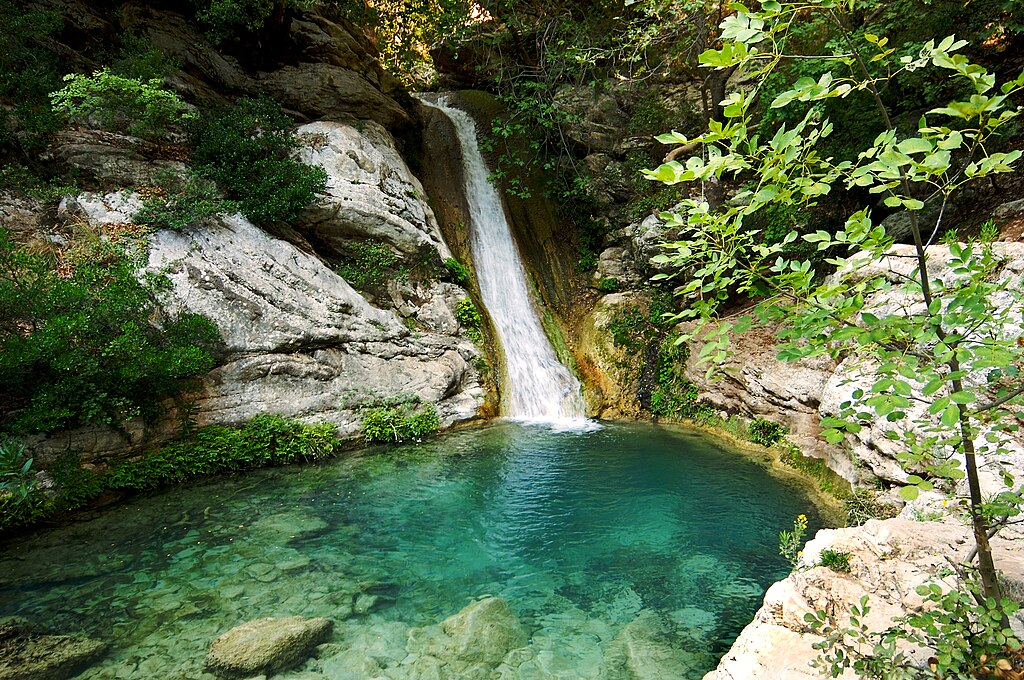
Polylimnio Gorge in the region of Messenia is filled with dense vegetation and features multiple lakes and waterfalls connected by a path and small bridges. It’s a popular destination for hiking, canyoning and ziplining, and those partial to cold waters can take a refreshing swim in the ponds.
Lepida Waterfall (Arcadia)
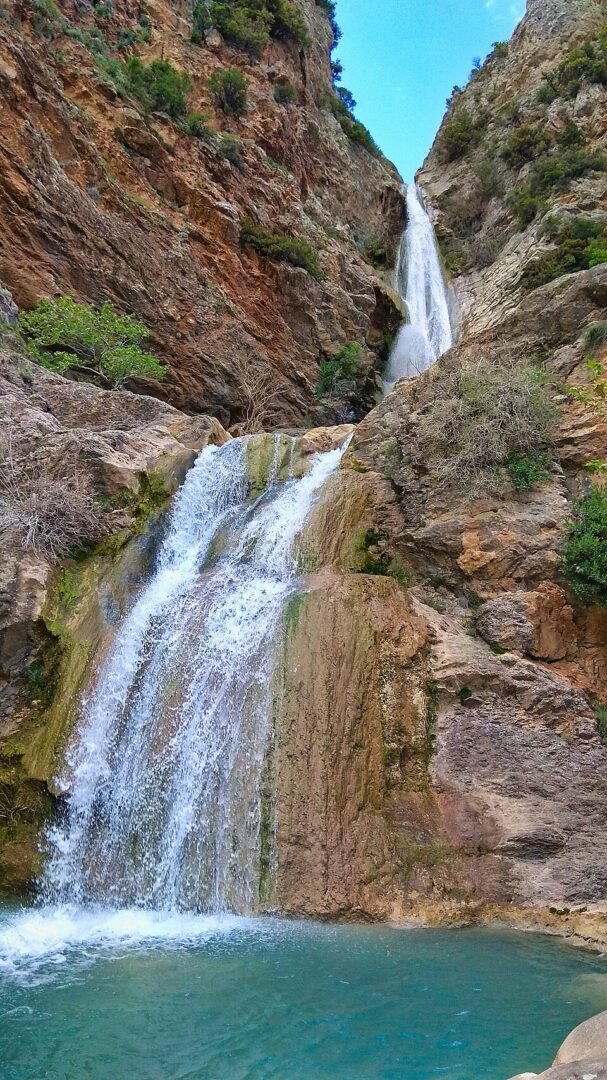
Lepida Gorge is a natural formation in Mount Parnon, in the region of Arcadia, Peloponnese. It features two waterfalls, one of 70 meters high and one 45 meters high. The first one, also known as Lepida (meaning blade in Greek), close to the village of Agios Ioannis, is accessible through a dirt road and following a short hike.
Islands
Waterfalls of Samothraki
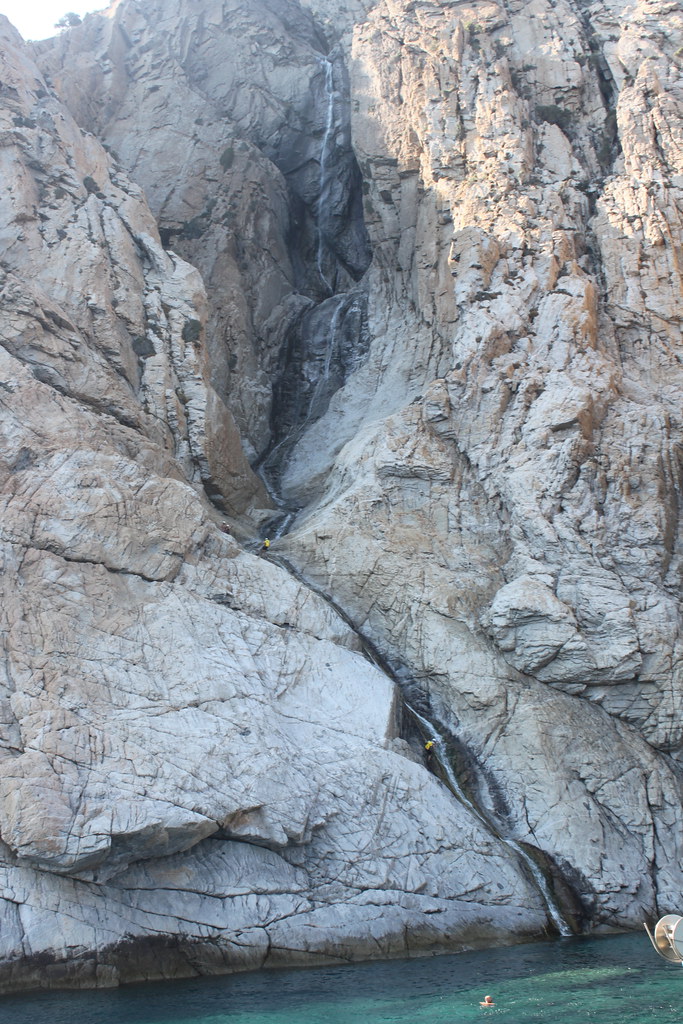
Samothraki (or Samothrace) in northern Greece is a place known for its natural beauty, mountains, waterfalls, and rock pools. The waterfall known as Kremasto Nero (literally “hanging water”) or simply Kremastos is the highest waterfall on the island. The impressive waterfall, located on the southern side of the island, plunges into the sea from a height of 180 meters. Due to its wild and rugged terrain, it can only be accessed by sea.
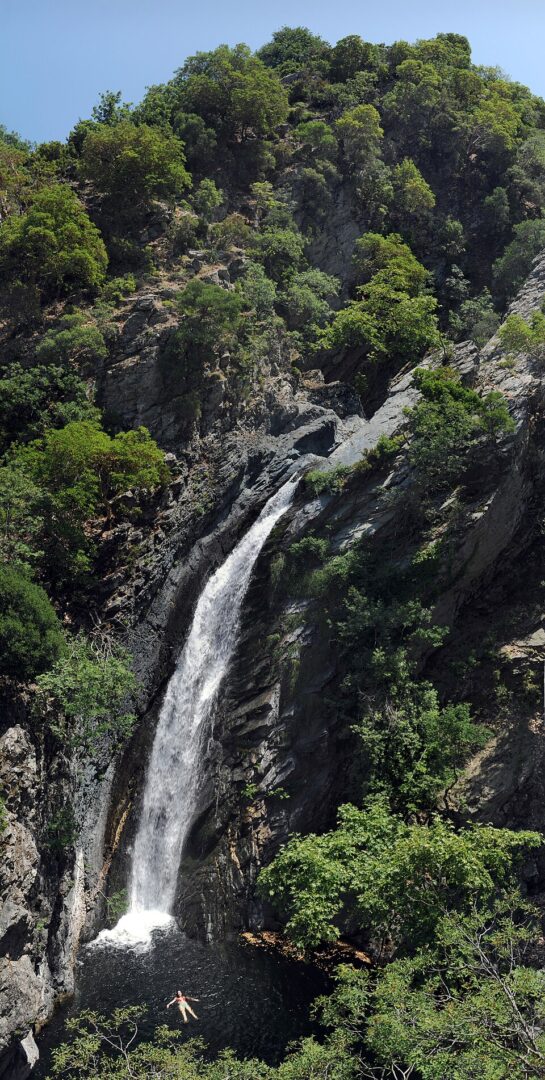
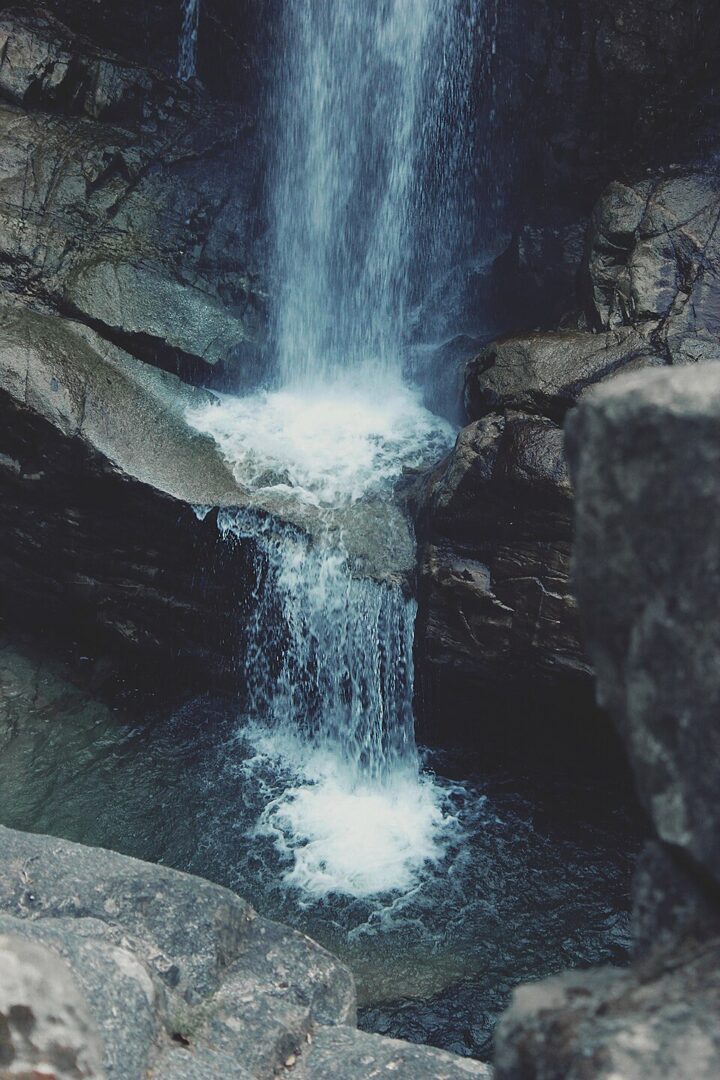
Samothraki’s arguably most famous attraction, the Fonias (literally “murderer”) Gorge, known for its striking natural beauty, lush vegetation, rock pools (“vathres”) but also its steep and challenging hiking routes at higher altitudes. The gorge has three waterfalls, all flowing into vathres – the eponymous Fonias waterfall, the quaint Gerania, and tallest one, Klidosi, which has an altitude of 35 meters. The gorge is another ideal canyoning destination, but it takes experienced guides and caution.
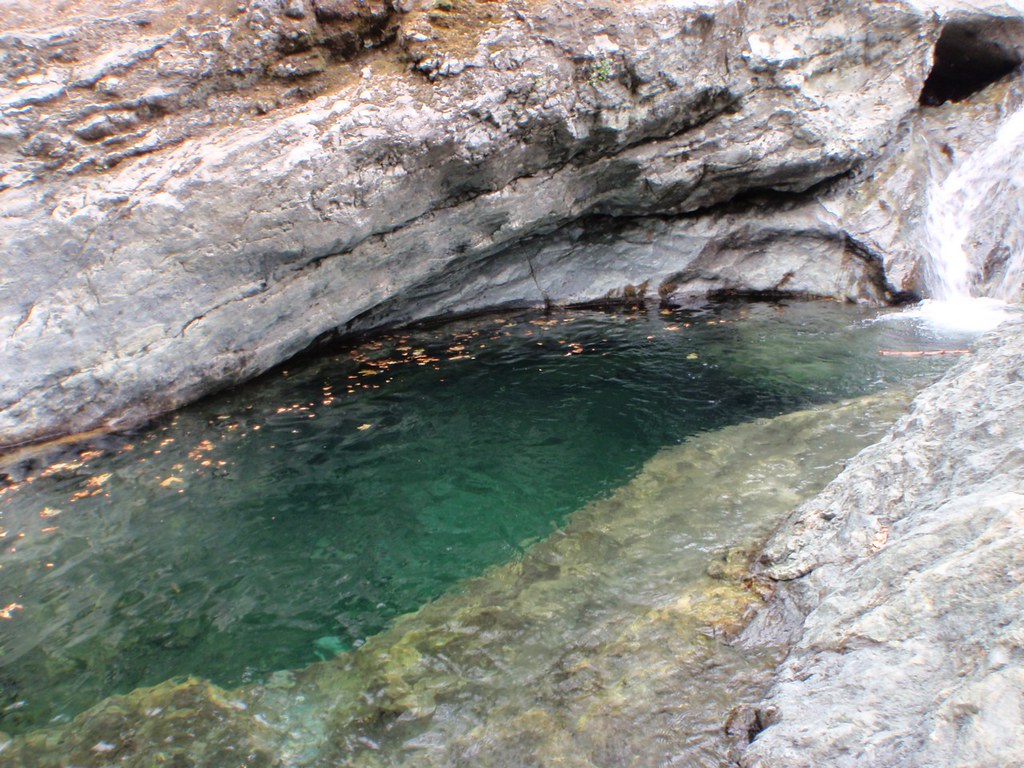
There are other more smaller waterfalls in various parts of the island. Samothraki’s trademark natural pools (“vathres”) have been dug into the rock over a period of millennia, due to the many small rivers that spring from Mount Saos. In several cases, small waterfalls are created at the point were the water flows into the pools. Gria Vathra is one of the most famous and accessible ones.
Dimosari Waterfalls (Nydri), Lefkada
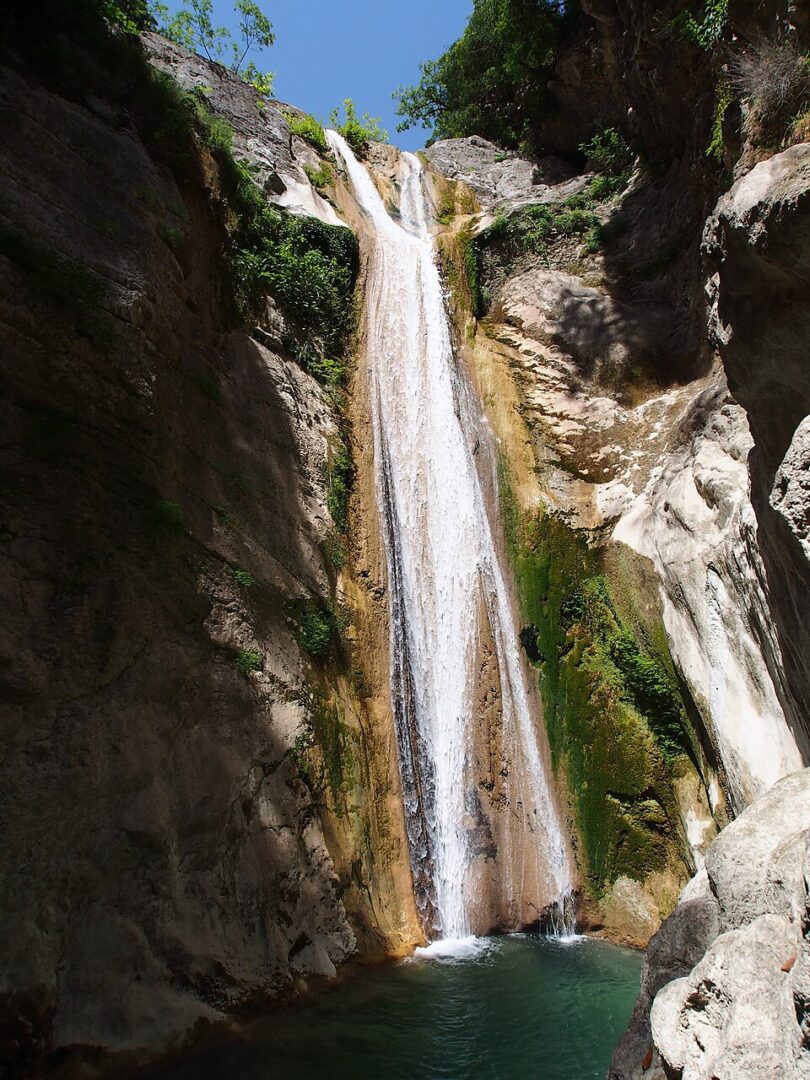
The high mountains in Lefkada are the source of numerous waterfalls that cascade down through the island’s mountainous terrain and eventually reach the sea. One prominent example is the Dimosari Waterfall near the town of Nydri (hence also known as Nydri Waterfall). It takes a two-hour hike through lush pine forests but the scenery makes up for the effort.
Neraida Waterfall, Kythira
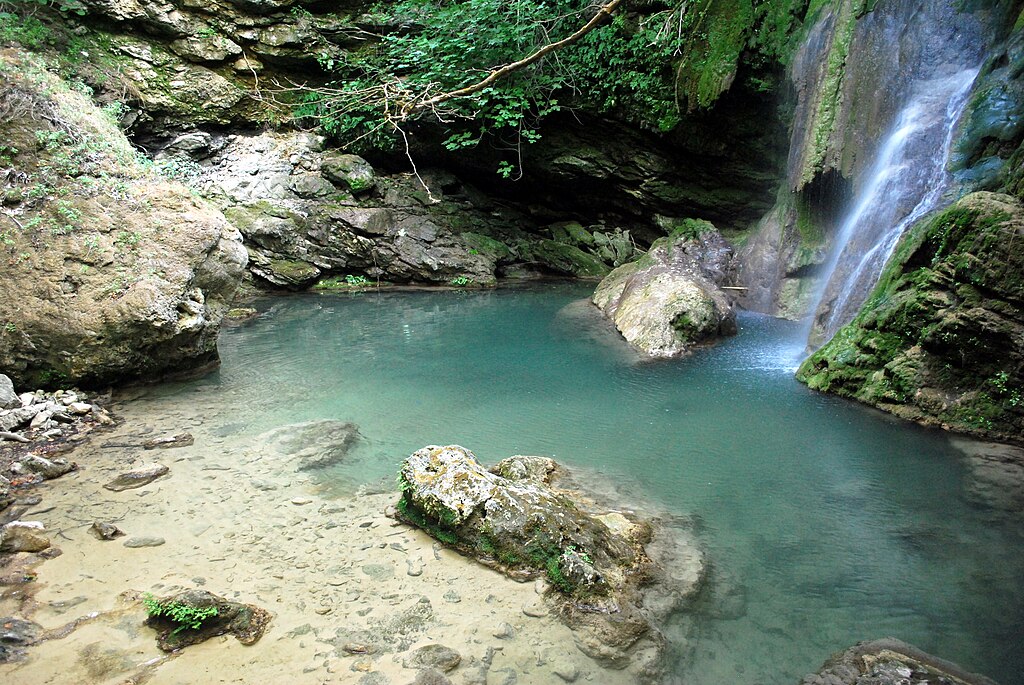
One of the most picturesque attractions on the island of Kythira is a waterfall known as Neraida (“Fairy”) but also as Fonissa (“Murderess”). The water plunges 65 feet into a cool, green pool. Reminiscent of a fairytale, the land is dotted with watermills, lakes and decorative bridges.
Man’Katsa Waterfall, Lesbos
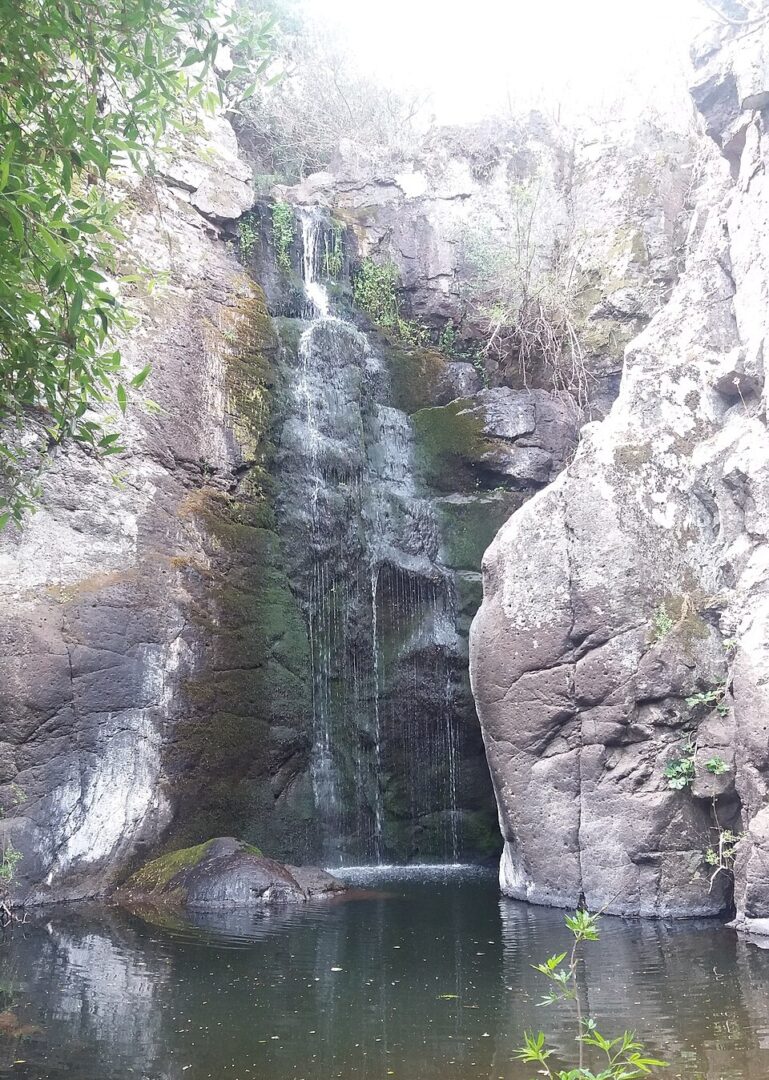
The island of Lesbos boasts several waterfalls, due to its geological formations and ample rainfall. Arguably the most famous one is Man’Katsa, found in the Aspropotamos river, in the northeastern part of the island. The waterfall is 12 meters high with a 1-1.5m deep pit, and its name is probably of Turkish origin.
N.M. (Intro image: Edessa Great Waterfall [by EntaXoyas via Wikimedia Commons])

